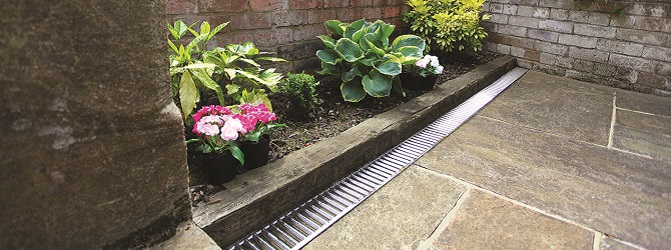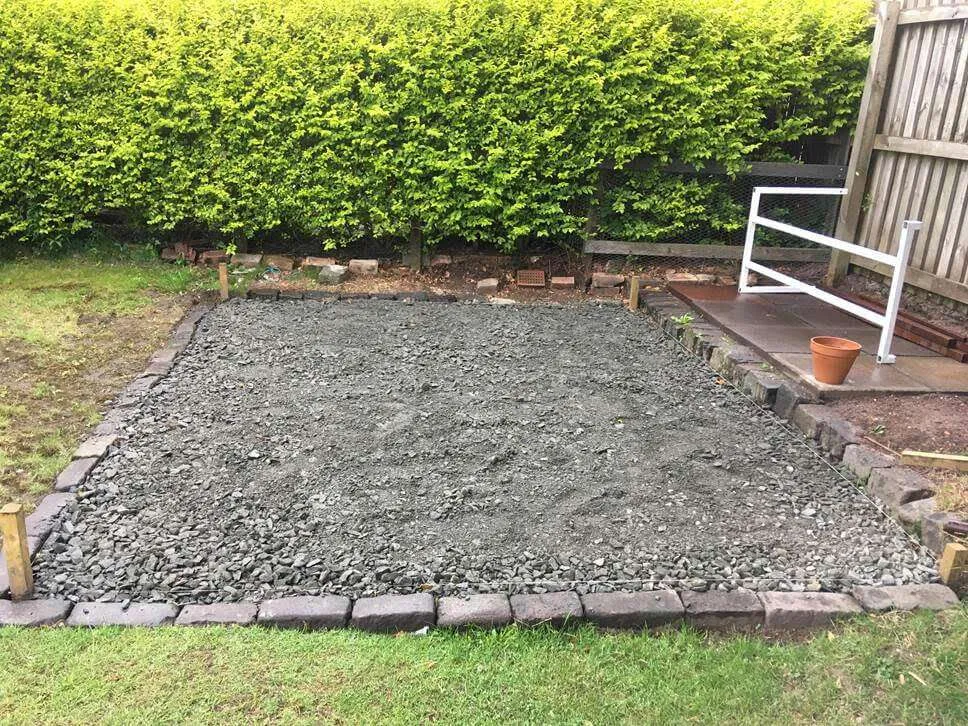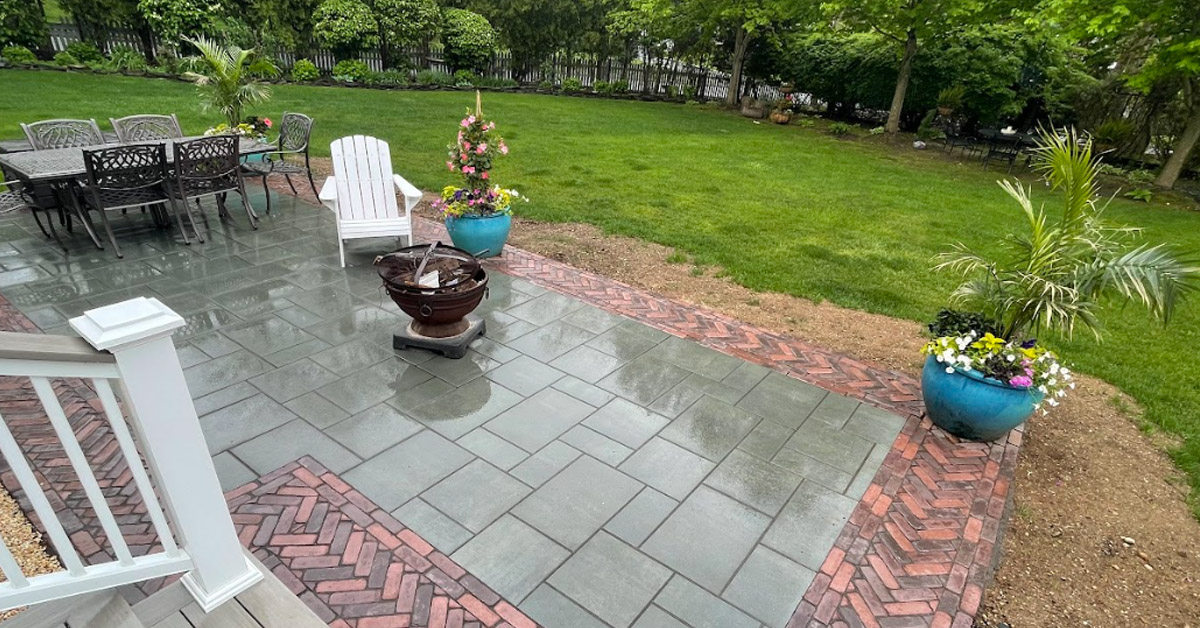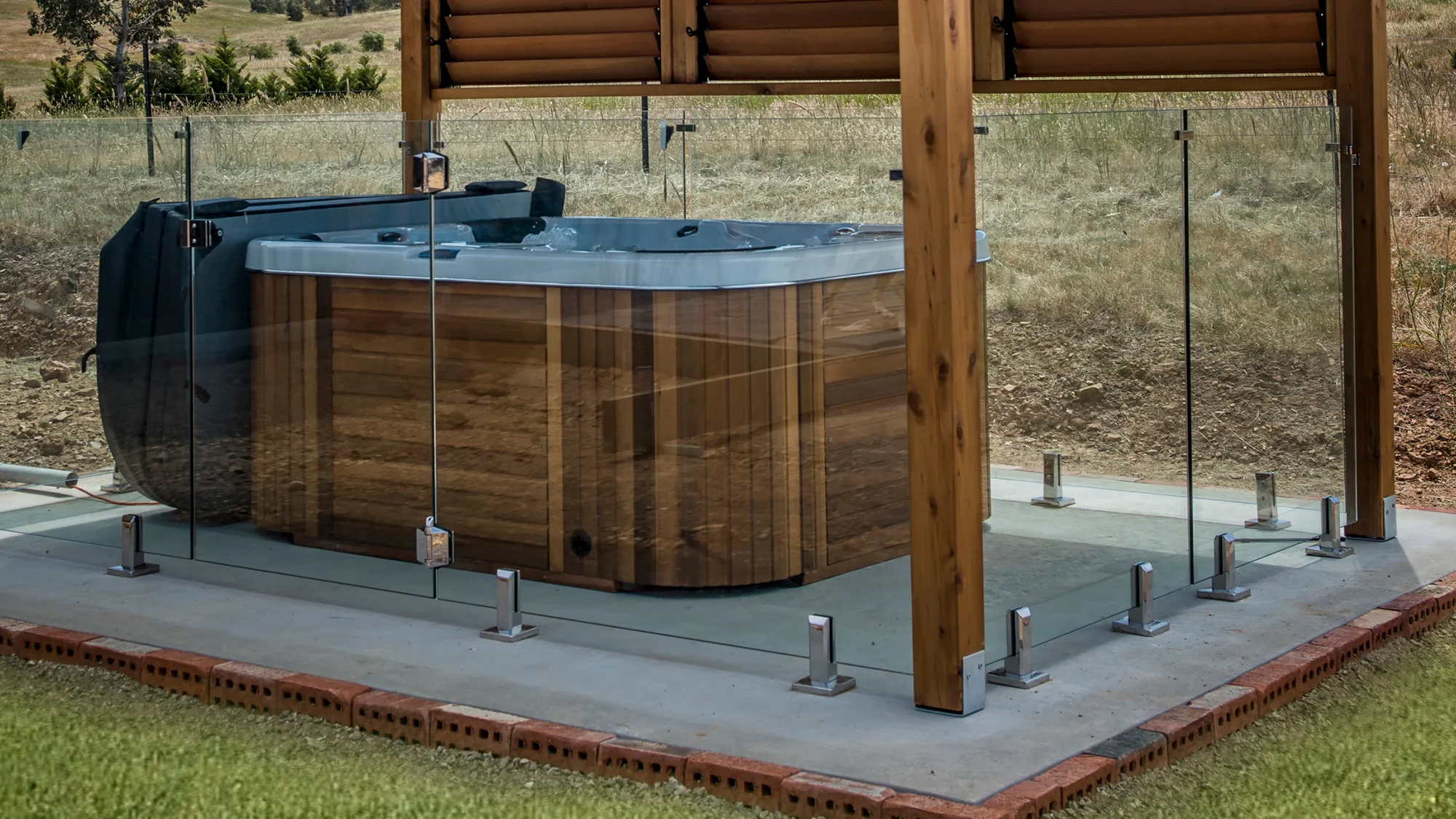
Water pooling on a patio is one of the most common issues homeowners face, especially in wetter areas of Worcestershire. Puddling can lead to slippery surfaces, moss growth, staining, joint failure, and long-term structural damage. In this guide, we explain the true causes of standing water, including installation errors, sinking slabs, blocked drainage, and ground movement. We also break down the professional fixes and preventative measures used at Plex to keep patios draining correctly year-round.
See how we can help you!
In Worcestershire, rainfall patterns and soil composition play a major role in patio performance. Areas like Pershore and Worcester have clay-heavy ground, which expands during wet periods and contracts in dry spells. This movement can affect the levels of a patio, creating shallow dips where water naturally settles.
However, the most common reason for puddling is incorrect installation. Patios must be laid with a precise fall, usually between 1:60 and 1:80, to encourage water to drain away from the house. When this slope isn’t created, water simply sits on the surface with nowhere to go. Another major factor is poor sub-base preparation. If the ground beneath the patio wasn’t compacted in layers or was laid on soft, unstable soil, the slabs can sink unevenly over time.
The issue can also stem from drainage problems in the surrounding garden. For example, in homes around Droitwich, where the ground naturally holds more water, gardens with poor runoff often force standing water back toward the patio. Without proper channels or soakaways in place, drainage becomes restricted, especially during heavy rainfall.
Understanding which of these causes is affecting your patio is the first step to solving the issue permanently.
Every patio requires a subtle gradient to direct water to a safe drainage point. This slope is usually so gentle that homeowners never notice it — but it plays a crucial role in preventing puddles. When patios are installed without the correct falls, even a tiny area of low ground can collect significant amounts of water.
In Worcester and Evesham, we often see patios laid level because DIY guides or inexperienced installers assume a flat patio looks better. Unfortunately, flat patios almost always result in drainage issues. Without a fall, rainfall gathers in the lowest spots and cannot disperse, especially on non-porous materials like porcelain or sandstone with sealed surfaces.
Even patios that were originally laid with a correct slope may lose their fall over time if the ground beneath shifts. This is especially common in clay soil areas, where swelling and shrinkage can cause a gradual change in levels.
Correcting falls typically requires lifting sections of the patio, rebuilding the bedding layer, and relaying the slabs with the appropriate gradient. This ensures water flows naturally off the surface into drainage channels, gravel borders, or lawn areas.
An unstable or inadequately compacted sub-base is one of the leading causes of patio sinking. If the installer didn’t excavate deep enough or skipped proper compaction, the patio will gradually settle into the ground. When this happens, one corner or section can dip slightly lower than the rest, collecting standing water.
In areas like Kidderminster and Bromsgrove, where soil can be softer and more moisture-retentive, patios without a strong MOT Type 1 foundation are especially prone to developing low spots. Over time, these dips become more pronounced, leading to puddles that remain for days after rainfall.
Fixing uneven slabs involves more than simply lifting and packing underneath. The whole foundation must often be rebuilt to prevent the issue recurring. A solid sub-base builds long-term stability and ensures the patio remains level for years to come.
Yes — and it’s one of the most overlooked causes. Many patios rely on ACO channels, French drains, gulley systems, or simple gravel margins to manage water. If these are missing, undersized, or clogged, the patio surface will hold water.
In Worcester’s older neighbourhoods, drains commonly become blocked with leaves, soil, and debris, especially after autumn storms. Once blocked, water has no clear path to escape and will sit until it evaporates.
Sometimes patios are built without any drainage considerations at all. This is often seen in smaller gardens or older installations where water was expected to drain into the soil. With today’s wetter winters and tighter clay grounds, that approach is no longer reliable.
Professional drainage solutions such as gravel borders, permeable channels, and soakaways are often required to ensure water flows away naturally.
Cracked, missing, or permeable jointing allows water to seep between slabs and settle underneath. Once water enters the bedding layer, it can freeze in winter, causing slabs to lift or shift. This movement creates new low spots on the surface, worsening the puddling problem.
Areas like Malvern experience colder nights in winter, increasing the risk of freeze–thaw damage. Porcelain patios with weak jointing compounds are especially vulnerable, as water can penetrate beneath even the slightest gaps.
Repointing with modern resin jointing compounds or polymeric sand improves water runoff, protects the bedding mortar, and enhances the patio’s overall durability.

A neglected garden reimagined into a stunning rustic retreat, featuring reclaimed brickwork, a charming patio, and vibrant planting—blending timeless character with thoughtful design.

A complete garden overhaul in Cheltenham, transforming an overgrown, rat-infested space into a sleek, low-maintenance outdoor oasis with porcelain paving, integrated lighting, and a rat-proof brick wall.
At Plex, repairing patio drainage issues involves a systematic process:
We start by assessing existing levels using laser levels and string lines.
We identify low spots, sinking areas, and improper falls.
We check the sub-base condition by lifting test slabs.
We inspect surrounding garden drainage, including soakaways and channels.
We produce a plan that may include re-levelling, lifting slabs, resetting the bedding layer, installing drainage solutions, or rebuilding the sub-base entirely.
Every patio is different, and the solution depends on the root cause. In some cases, simply correcting a fall or clearing blocked drainage channels fixes the issue. In others, especially where the foundation has failed, a full rebuild of the base may be necessary.
A report from the UK Met Office notes that the West Midlands region has seen an increase in winter rainfall intensity over the past decade. Wetter conditions place more strain on patio drainage systems and highlight the importance of proper installation.
Source: https://www.metoffice.gov.uk/research/climate/uk-climate-trends
This aligns with what we see across Worcestershire — patios built without adequate falls or drainage are struggling to cope with changing weather patterns.
• Water pooling is usually caused by incorrect falls or sinking slabs.
Poor gradients or ground movement create dips where water naturally collects. Fixing this often involves re-levelling sections or adjusting the patio’s slope.
• A strong sub-base is essential for long-term performance.
Without proper excavation and MOT Type 1 compaction, patios can settle unevenly. Rebuilding foundations prevents ongoing drainage issues.
• Drainage systems play a crucial role.
Blocked or missing drainage channels prevent water from escaping. Adding ACO drains, French drains, or gravel borders improves flow significantly.
• Jointing failure allows water to penetrate the bedding layer.
Damaged joints lead to frost damage, sinking slabs, and long-term puddling. Repointing with durable compounds protects the surface.
• Professional assessment ensures the correct long-term fix.
Every patio is unique, and identifying the cause requires precise level checks, substrate inspections, and drainage evaluation. This prevents repeat issues and ensures proper water management.

.webp)
.webp)
.webp)
.webp)
.webp)
.webp)
.webp)
.webp)
Ensuring a patio drains correctly is not just about the immediate fix — long-term performance depends on how the entire system behaves through seasonal changes. In Worcestershire, winter rainfall, clay soil expansion, and freeze–thaw cycles all affect how well a patio sheds water year after year.
For example, patios built on expansive soil may remain stable for a few seasons before ground shrinkage creates new low points. A well-built patio anticipates this movement by using compacted sub-base layers and strong bedding mortar to keep slabs supported even when the soil shifts. Proper falls also ensure that even minor changes in level won’t interrupt the direction of water flow.
Drainage solutions must also be sized appropriately for the garden. A small ACO channel might work in a lightly used courtyard but fail in a larger patio where water collects from multiple areas. That’s why many of our long-term drainage fixes include integrated solutions such as gravel soak zones, redirecting surface runoff, or installing mini-soakaways.
Jointing materials play a major role in longevity, too. Traditional sand-and-cement joints can crack within a few winters, allowing water into the bedding layer. Modern resin-based compounds are more flexible, resist frost damage, and promote better runoff.
Ultimately, your patio’s drainage performance depends on how well the installer accounted for soil type, weather patterns, falls, and structural support. When all these elements work together, even heavy winter rainfall won’t cause puddling or long-term issues. At Plex, our approach focuses on building patios that remain stable and well-drained for years, regardless of soil movement or seasonal weather.

Standing water on patios is a preventable problem, and understanding its causes is the first step toward a long-term solution. Whether the issue stems from incorrect falls, sinking slabs, poor drainage, or jointing failure, each problem has a reliable professional fix when tackled properly. Worcestershire’s ground conditions and rainfall patterns make proper installation especially important, as even minor errors can develop into much larger issues over time. With the right preparation, stable foundations, and effective drainage systems, patios can remain safe, functional, and visually appealing throughout every season. Homeowners who address issues early can avoid costly repairs and enjoy a patio that performs as it should year-round.

Sometimes the most cost-effective way to transform a tired, overgrown, or uneven garden is to start fresh. This article explores when full garden removal and reset make better sense than repeated patchwork repairs. From failing patios and drainage problems to compacted soil and outdated layouts, we explain the signs that it’s time for a complete redesign — and how Plex rebuilds outdoor spaces across Worcestershire from the ground up for long-term performance and usability.

Water pooling on a patio is one of the most common issues homeowners face, especially in wetter areas of Worcestershire. Puddling can lead to slippery surfaces, moss growth, staining, joint failure, and long-term structural damage. In this guide, we explain the true causes of standing water, including installation errors, sinking slabs, blocked drainage, and ground movement. We also break down the professional fixes and preventative measures used at Plex to keep patios draining correctly year-round.

A strong concrete base is essential for sheds, garden rooms, summer houses, and hot tubs, ensuring long-term stability and preventing costly structural issues. In this detailed guide, we explain the professional process behind building durable concrete bases in Worcestershire, including ground preparation, depth requirements, reinforcement, curing times, and soil considerations. Homeowners will learn exactly what goes into a reliable base and what to expect from a proper installation.